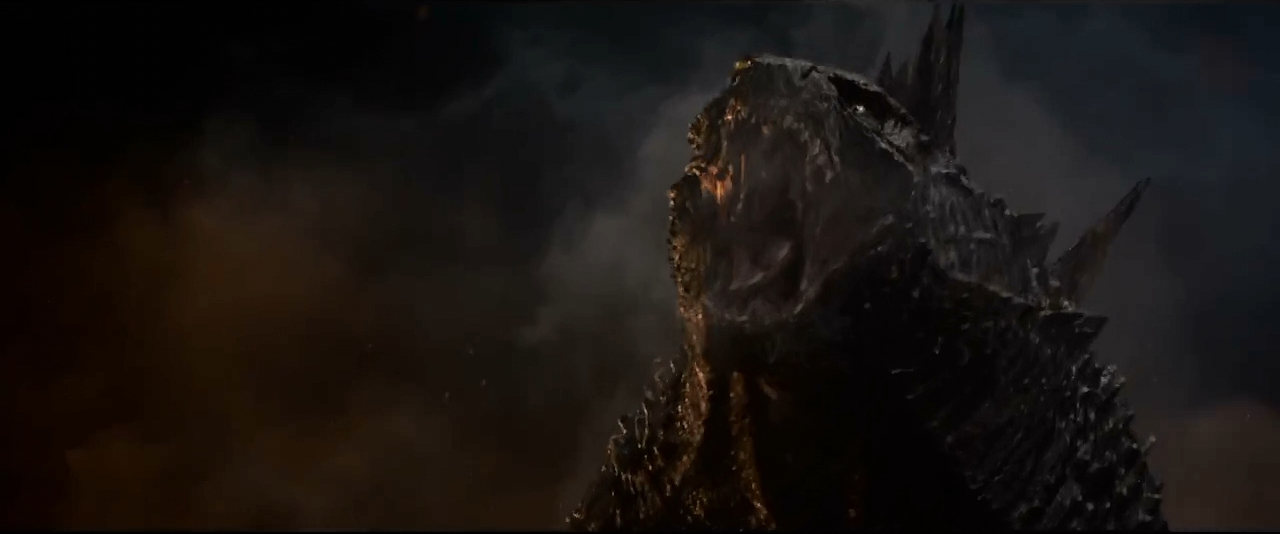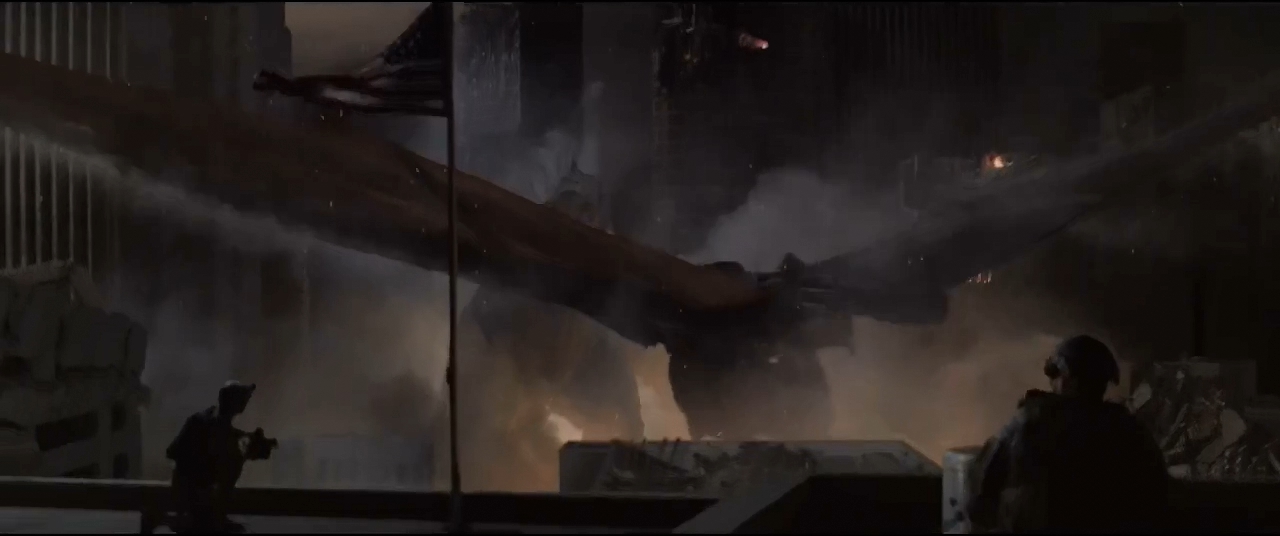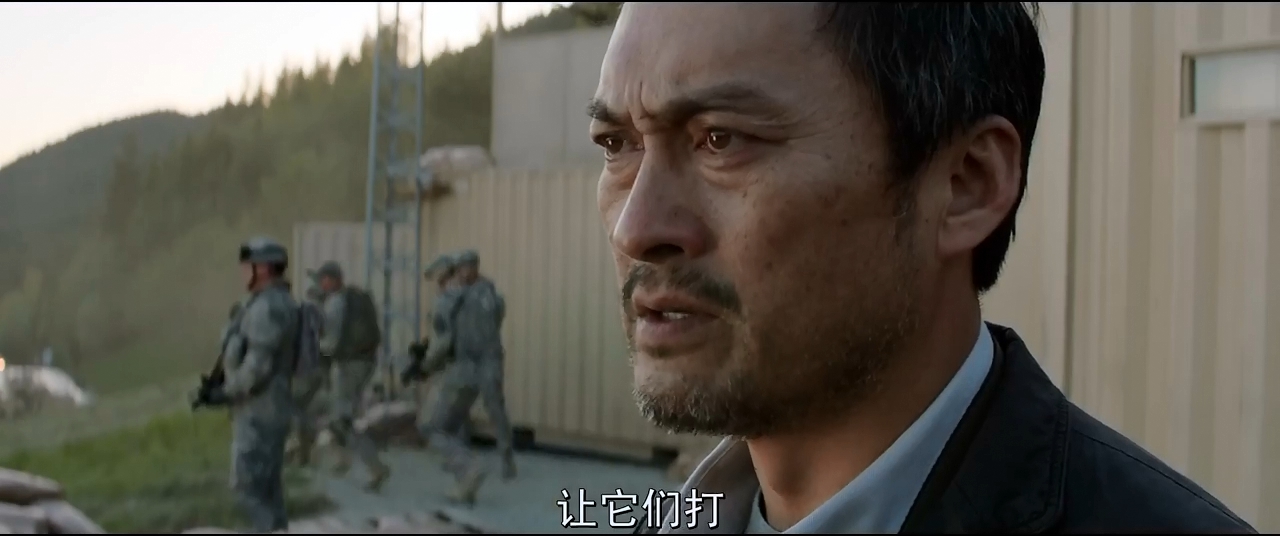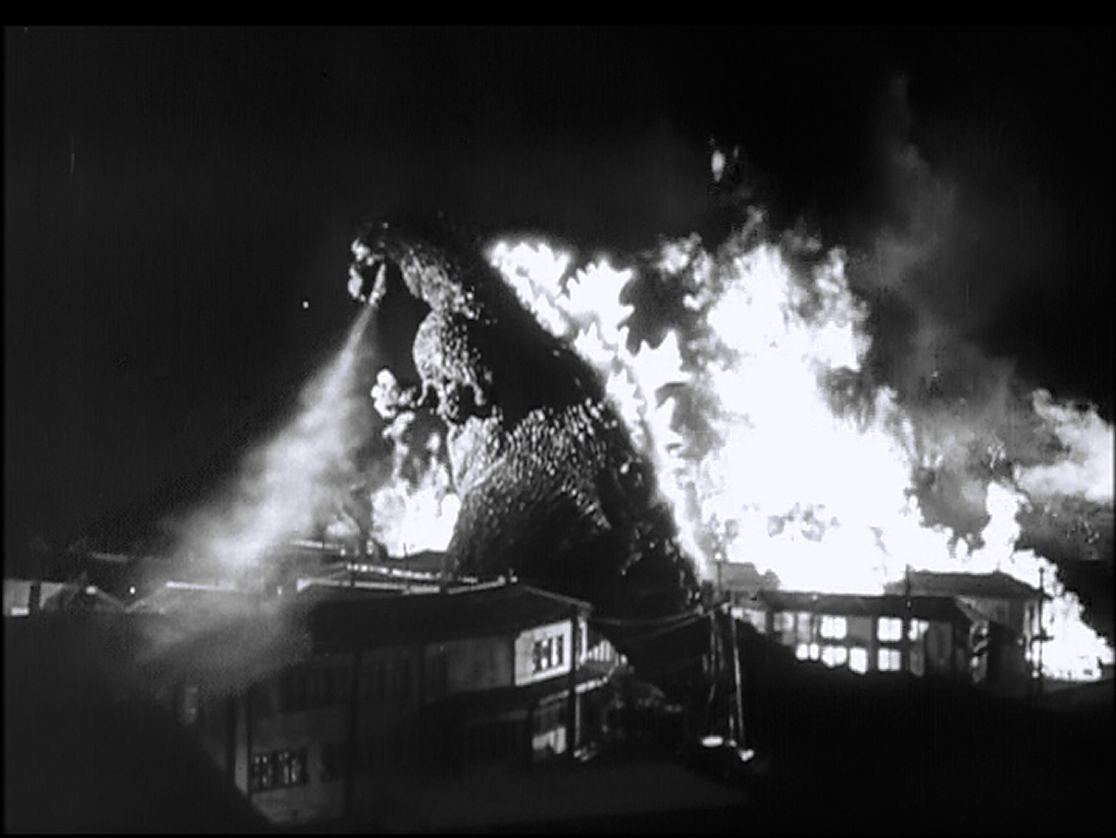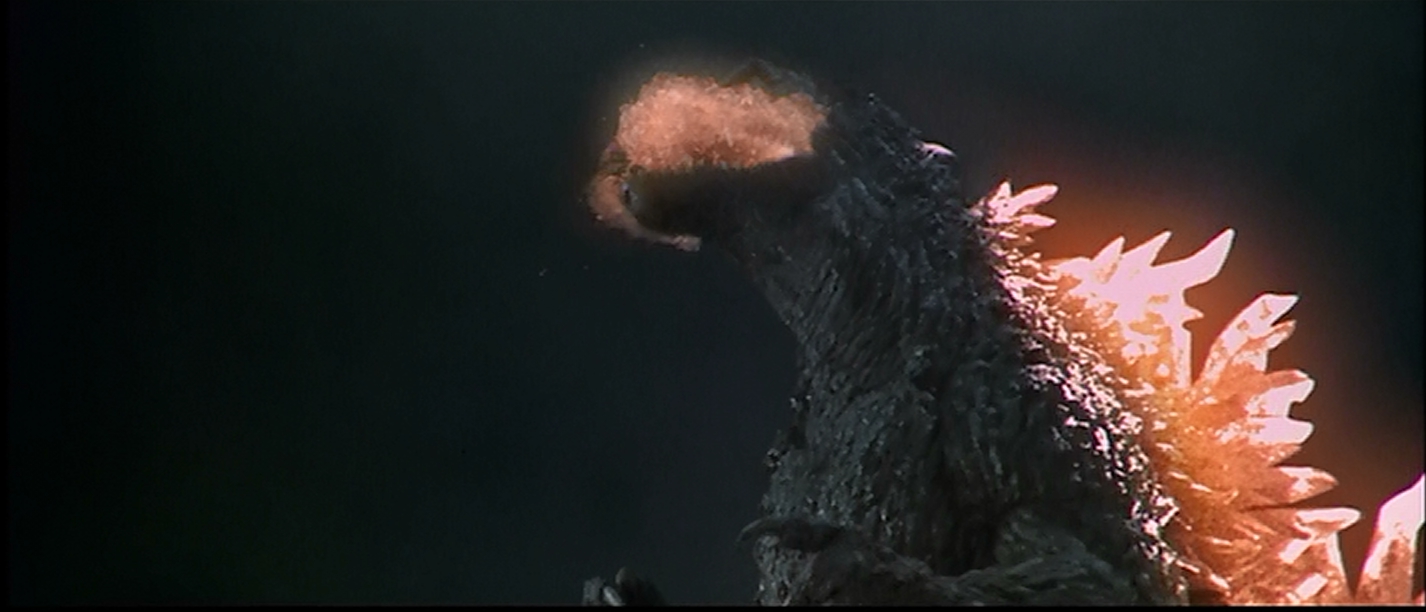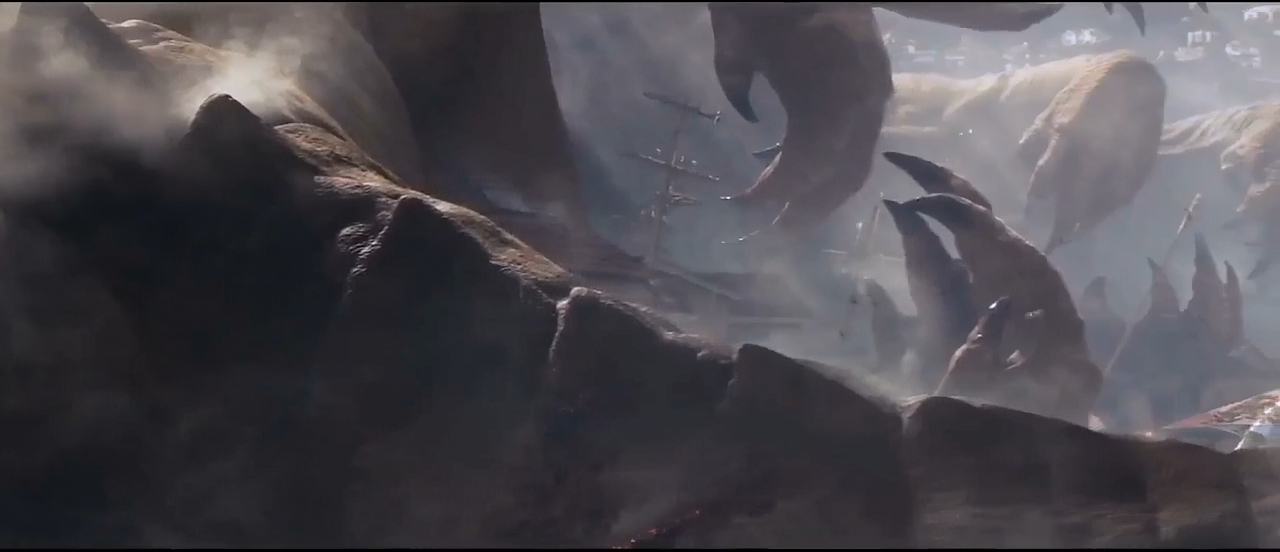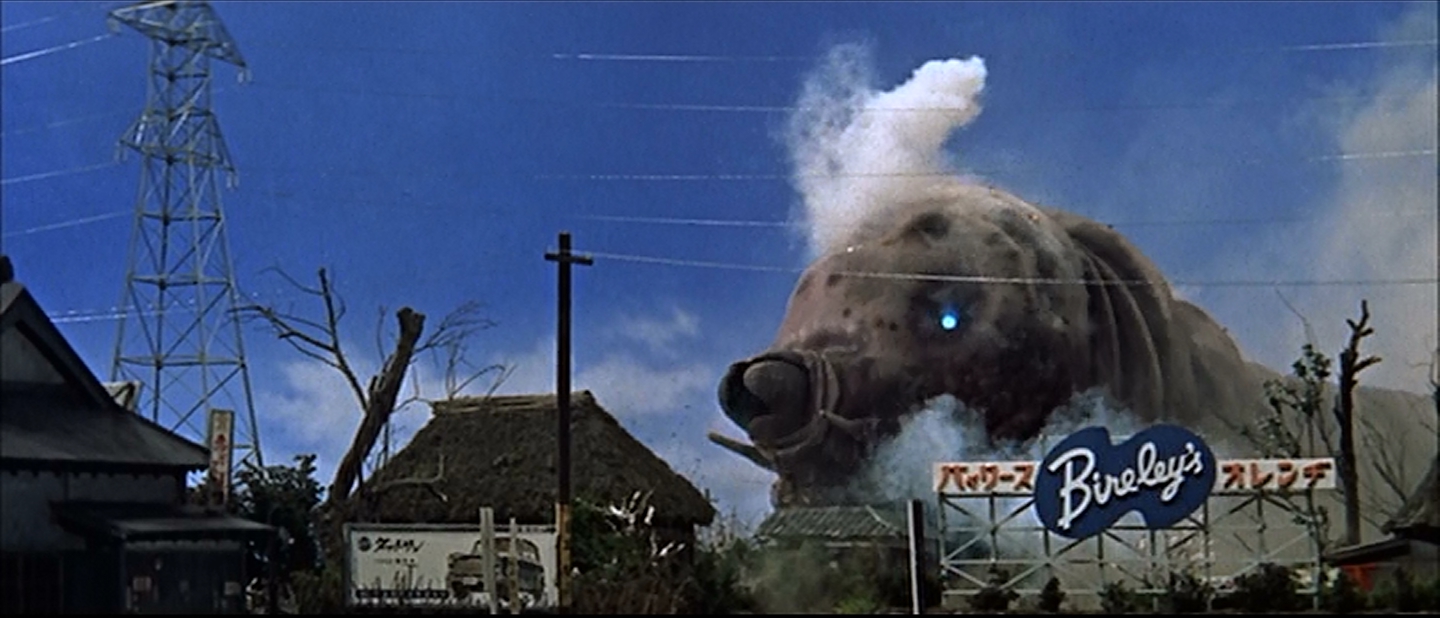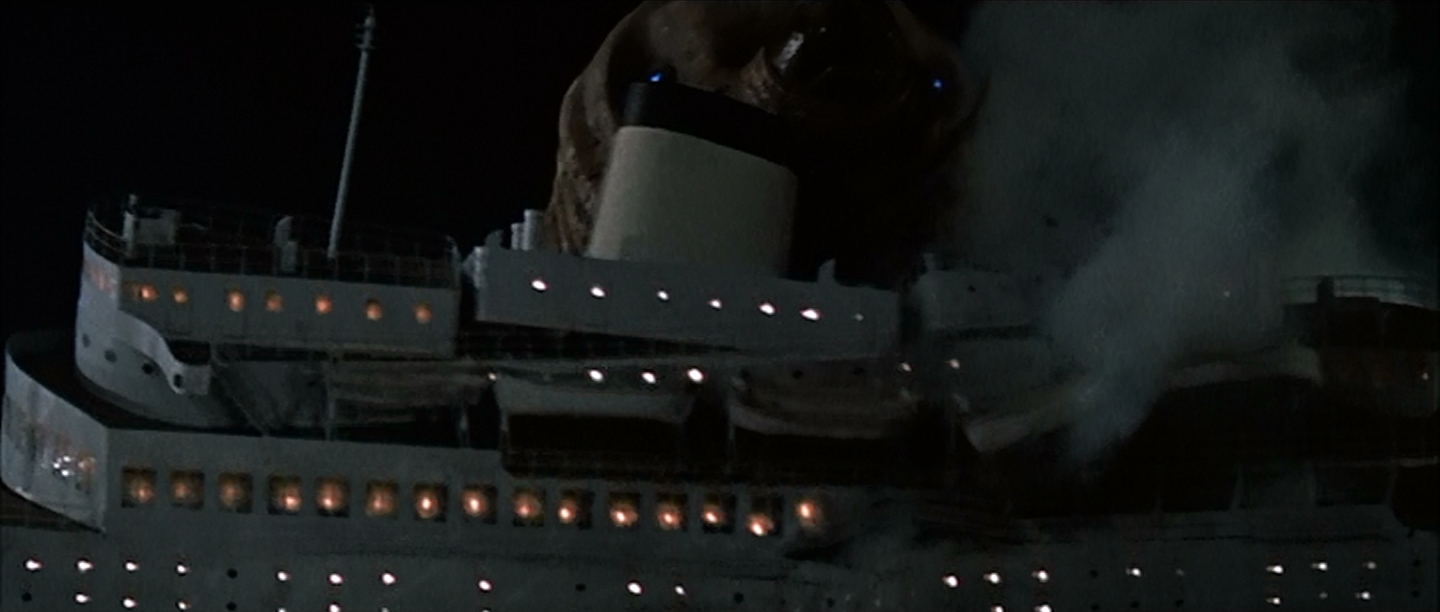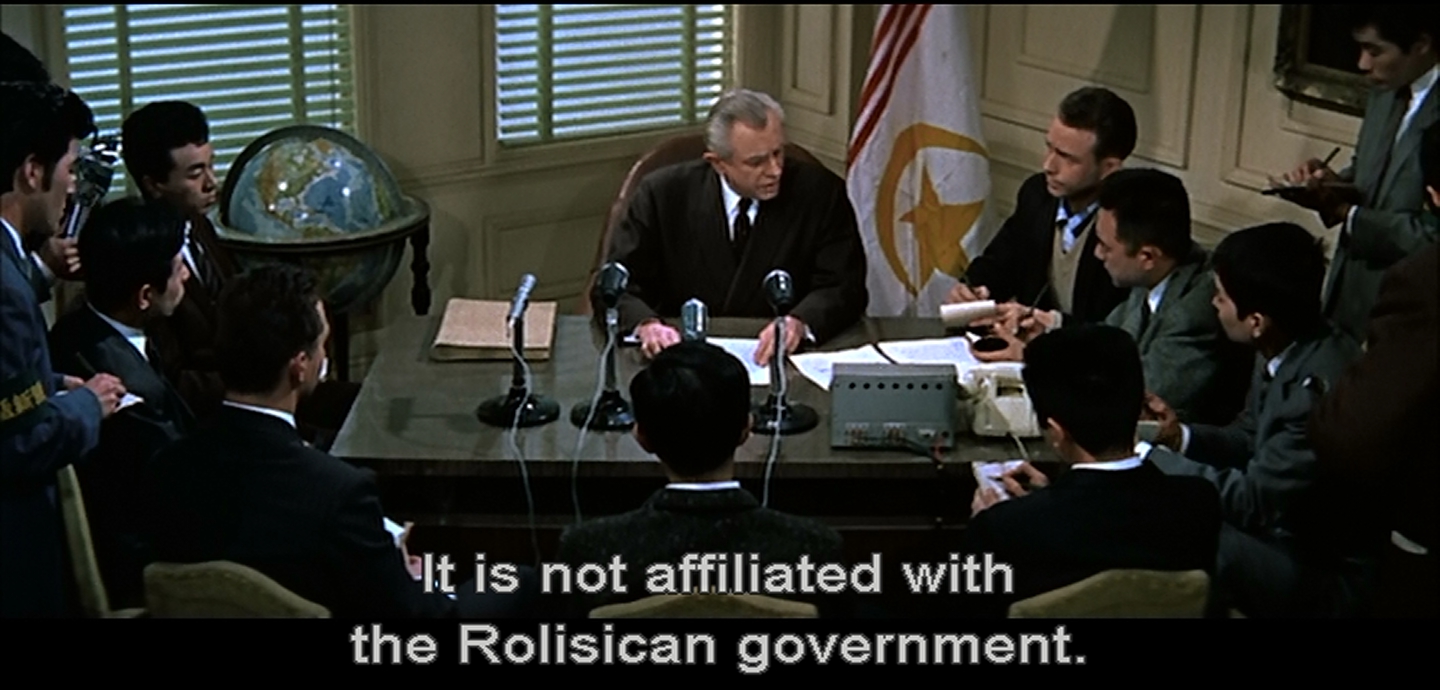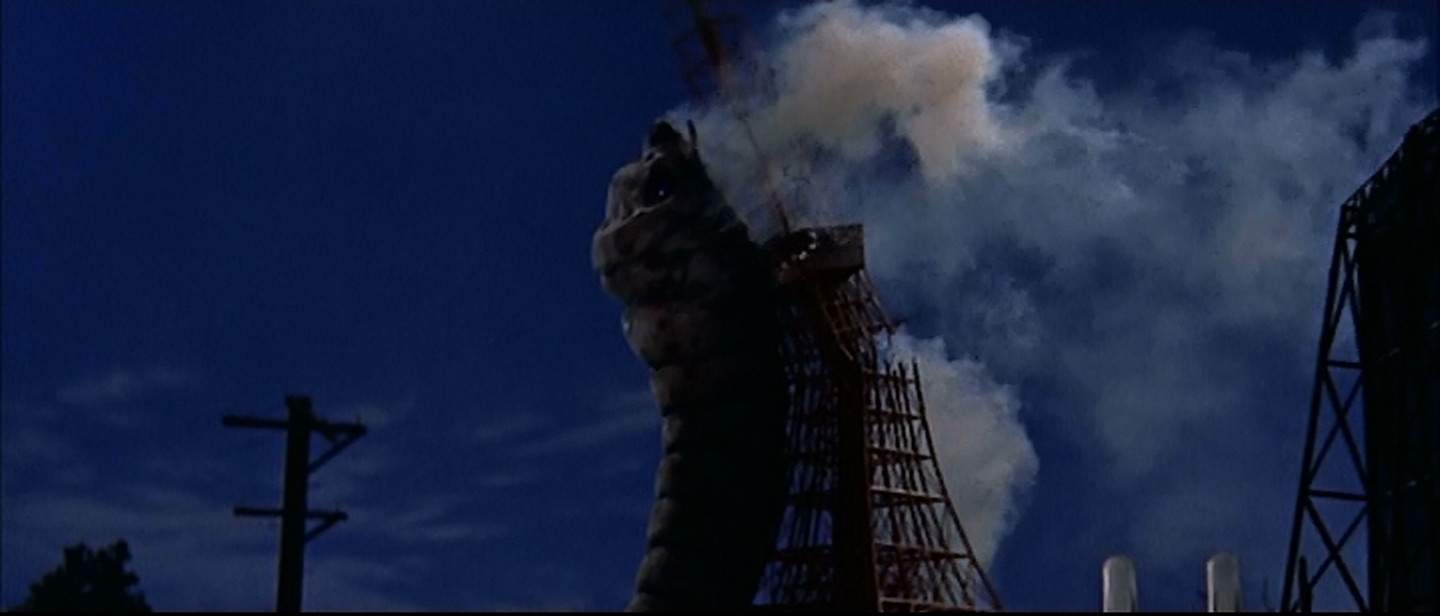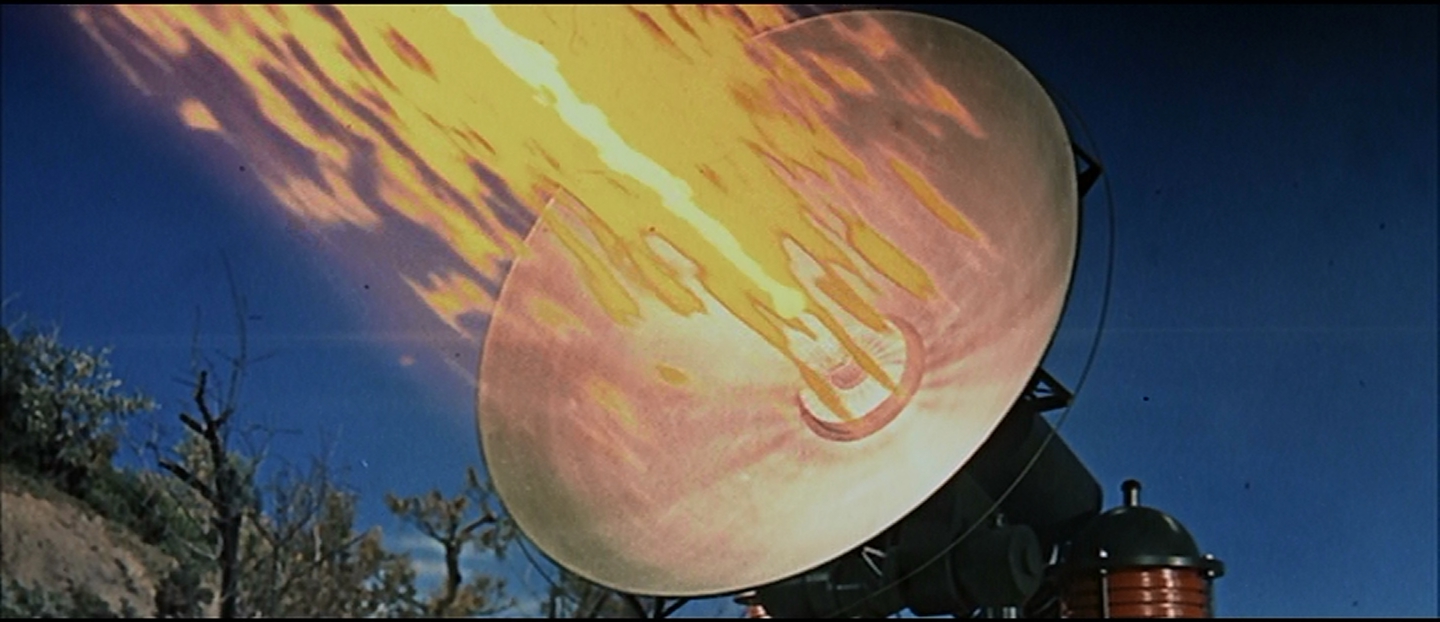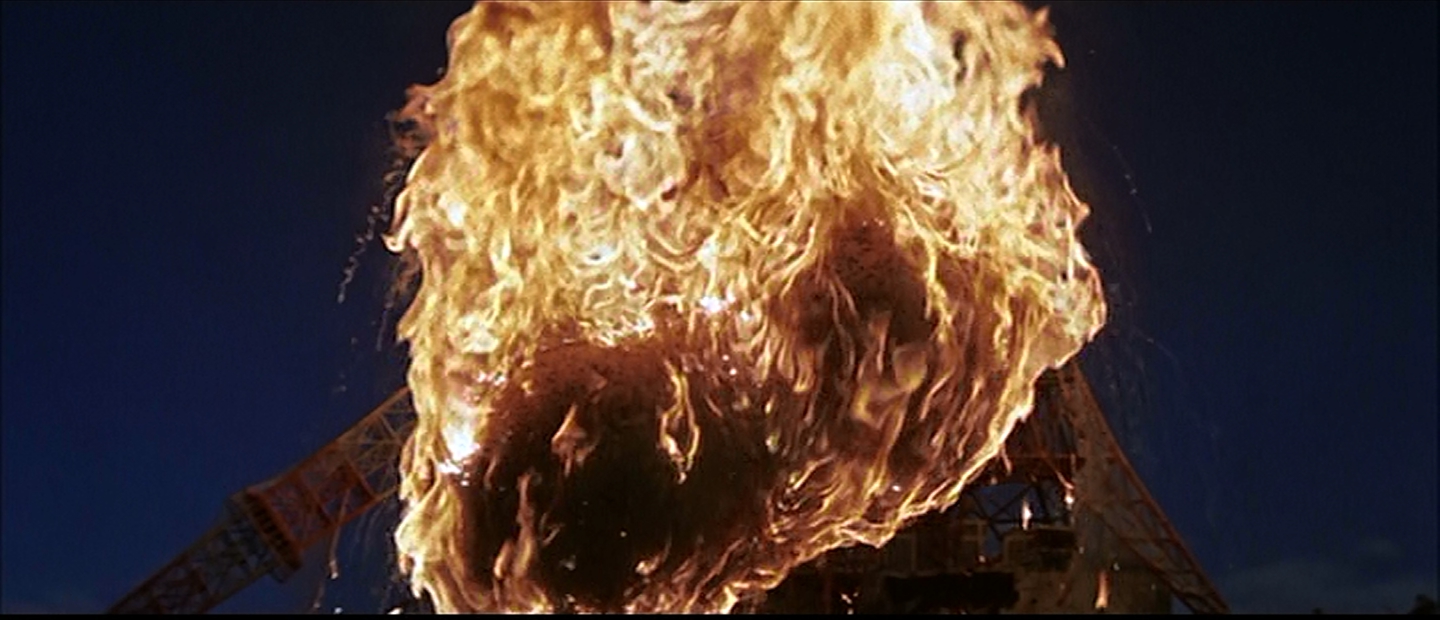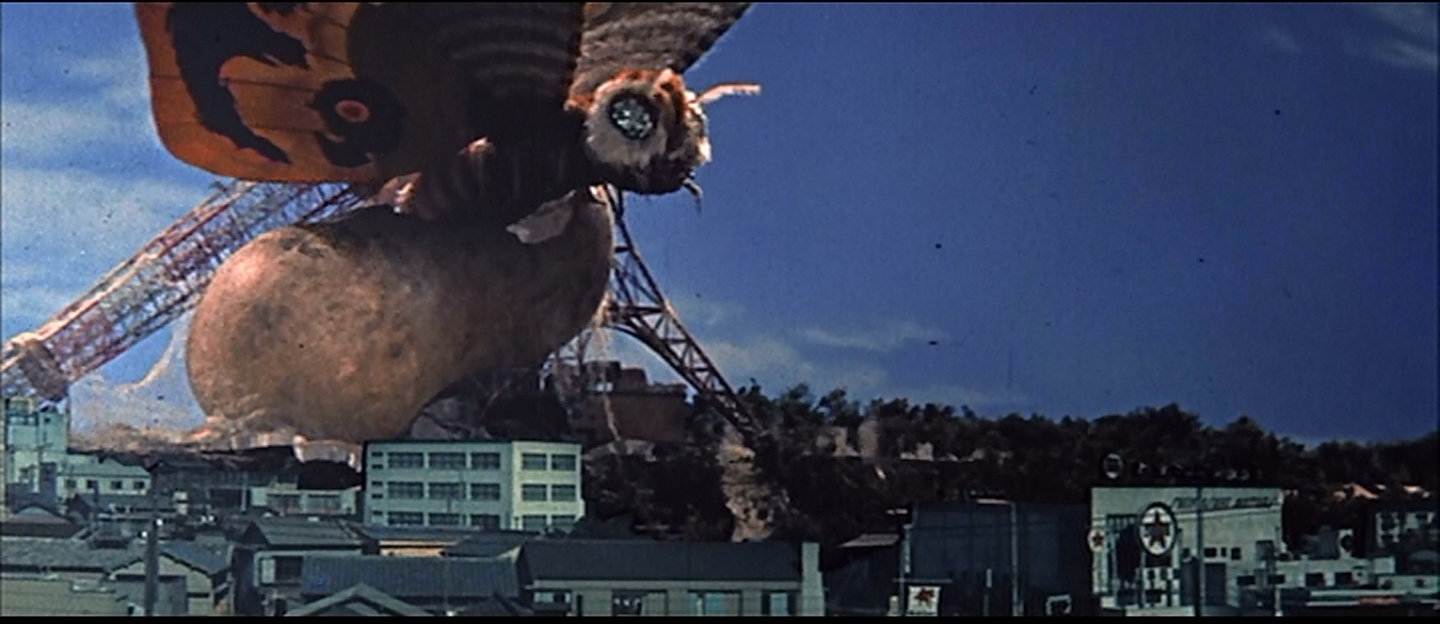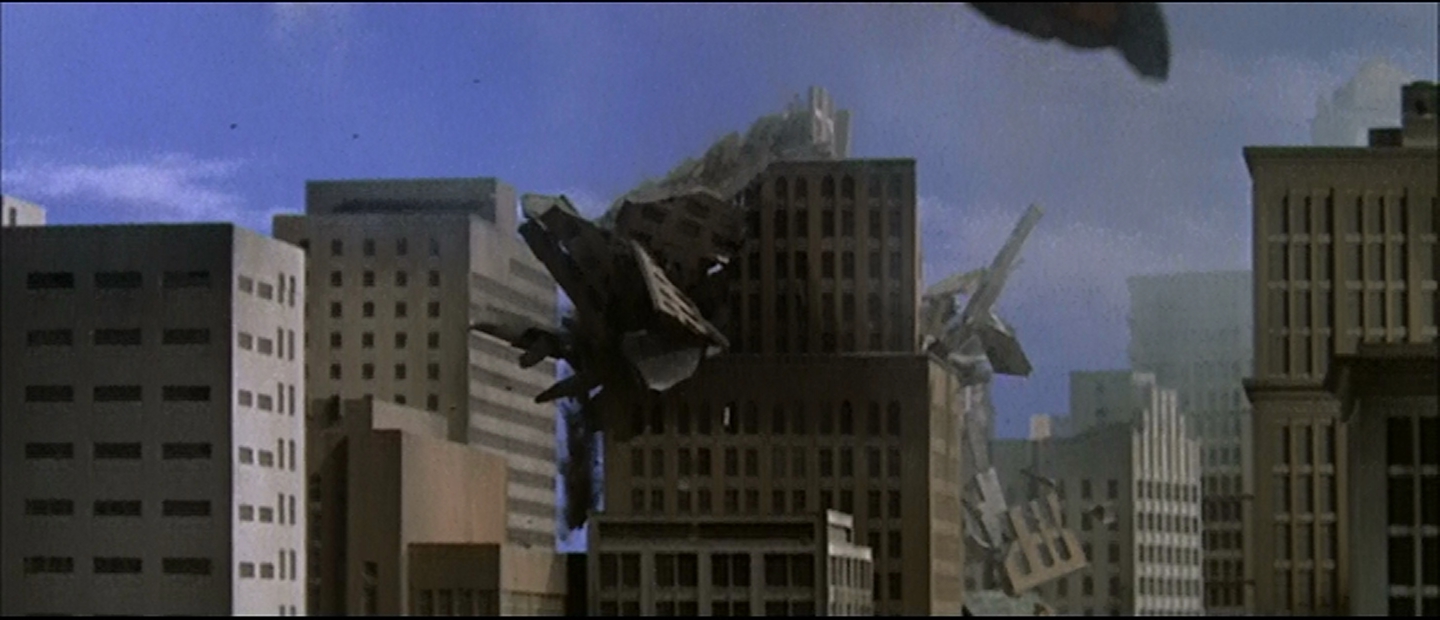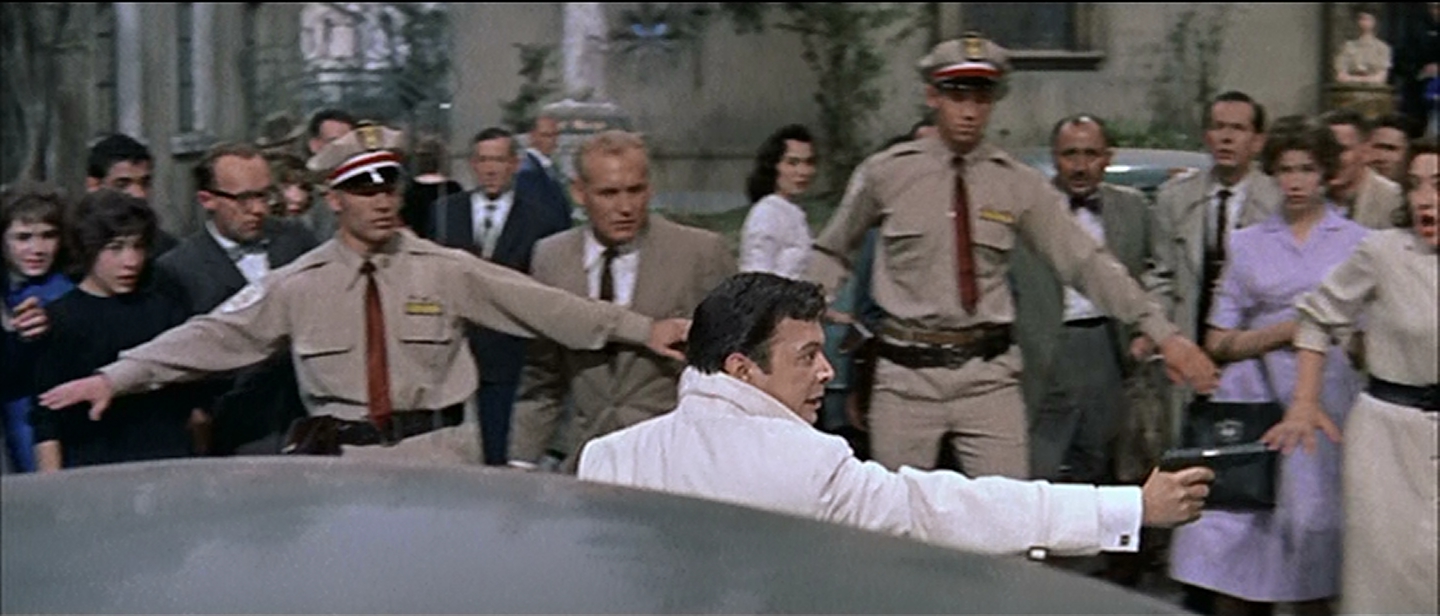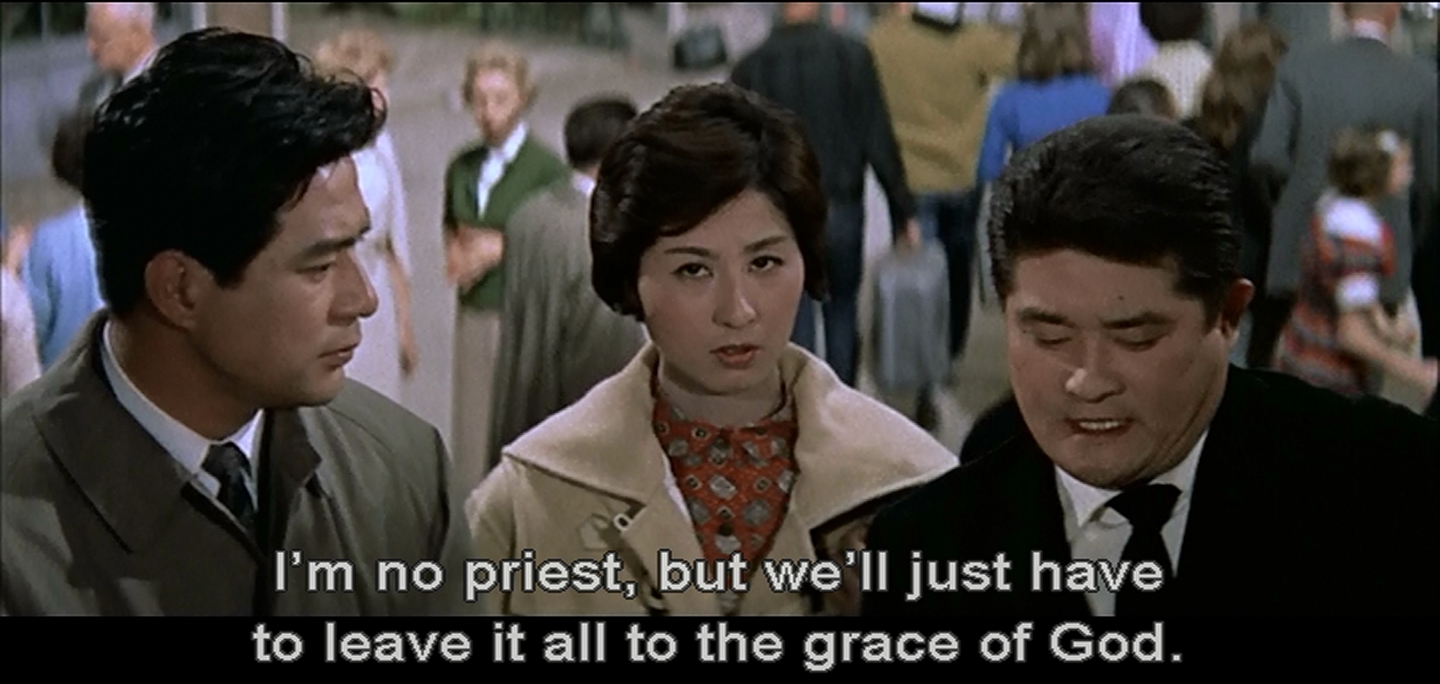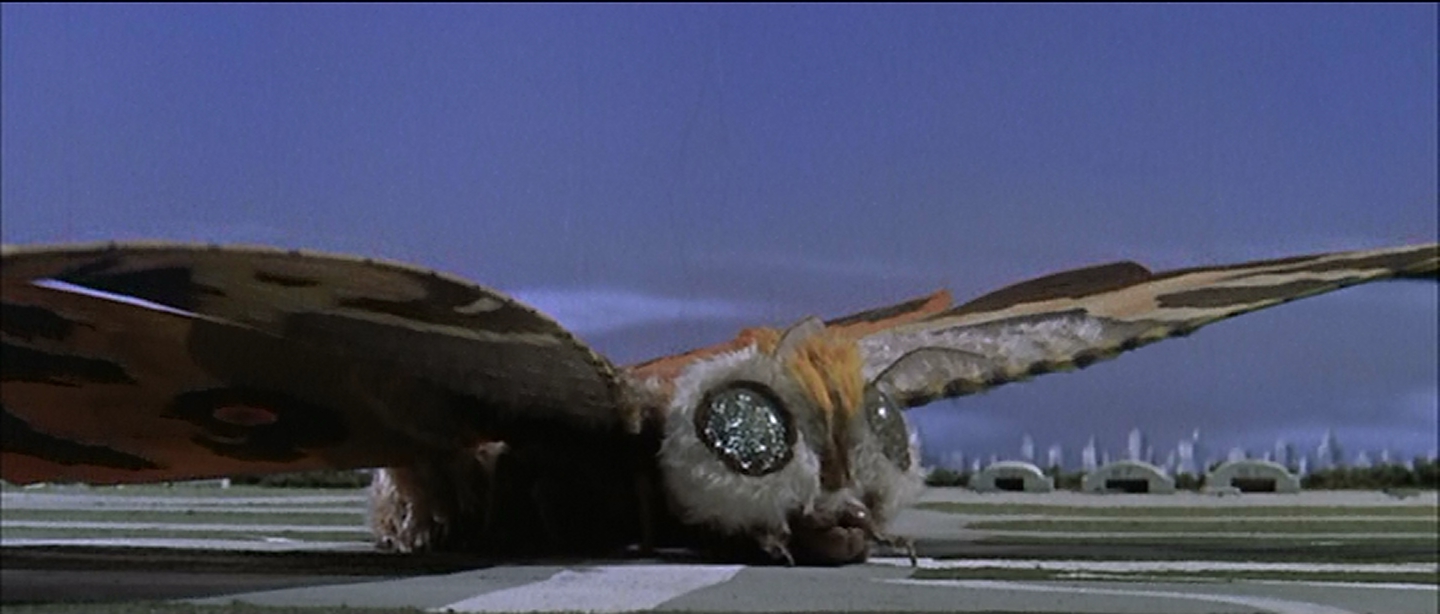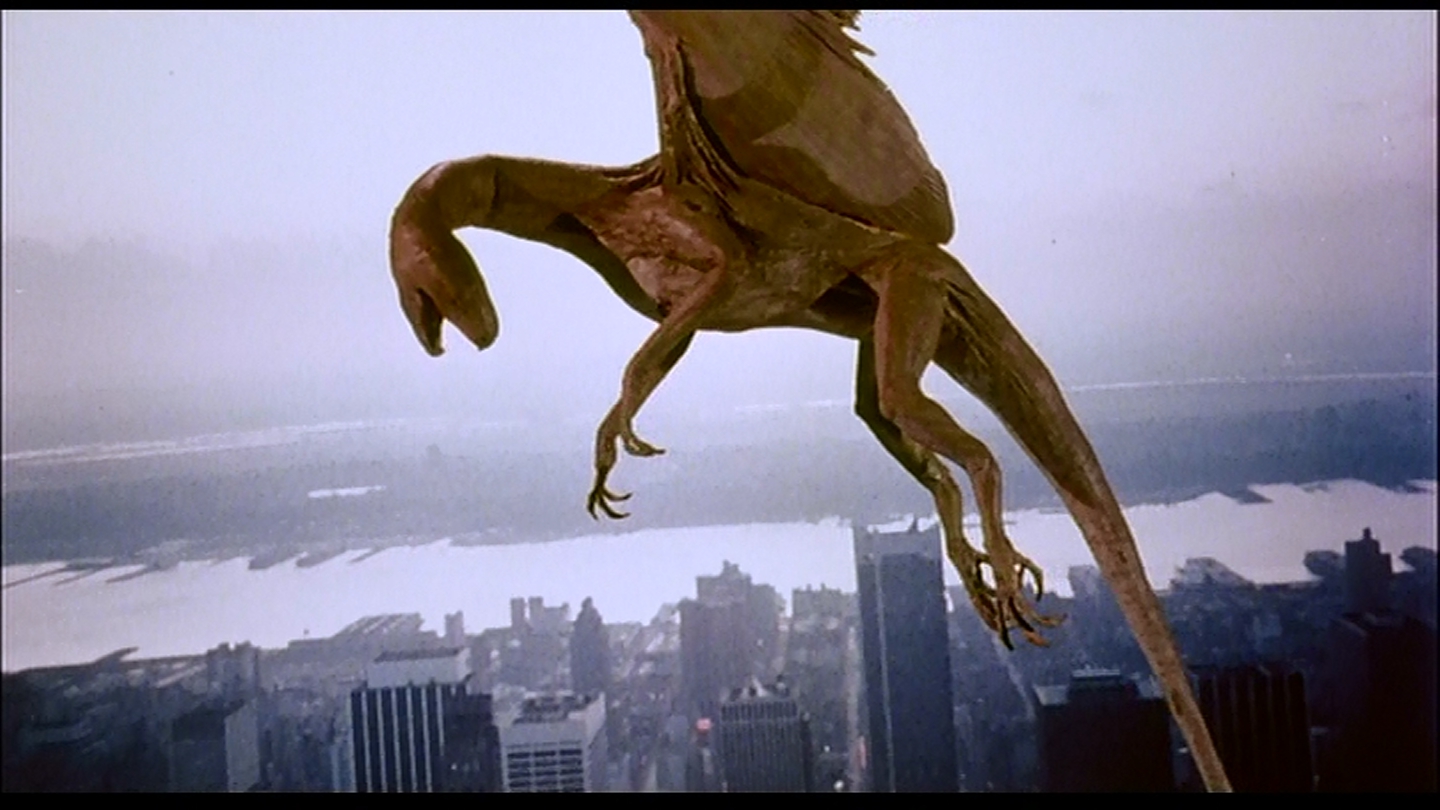
Larry Cohen's Q the Winged Serpent isn't strictly a kaiju film. No buildings are destroyed in this film. It's more of a regular-sized monster film, although I include it because it demonstrates a number of changes in movie-making in the eighties that would later affect kaiju films. But it has just about everything you could want from an eighties horror film: A decapitated window-washer
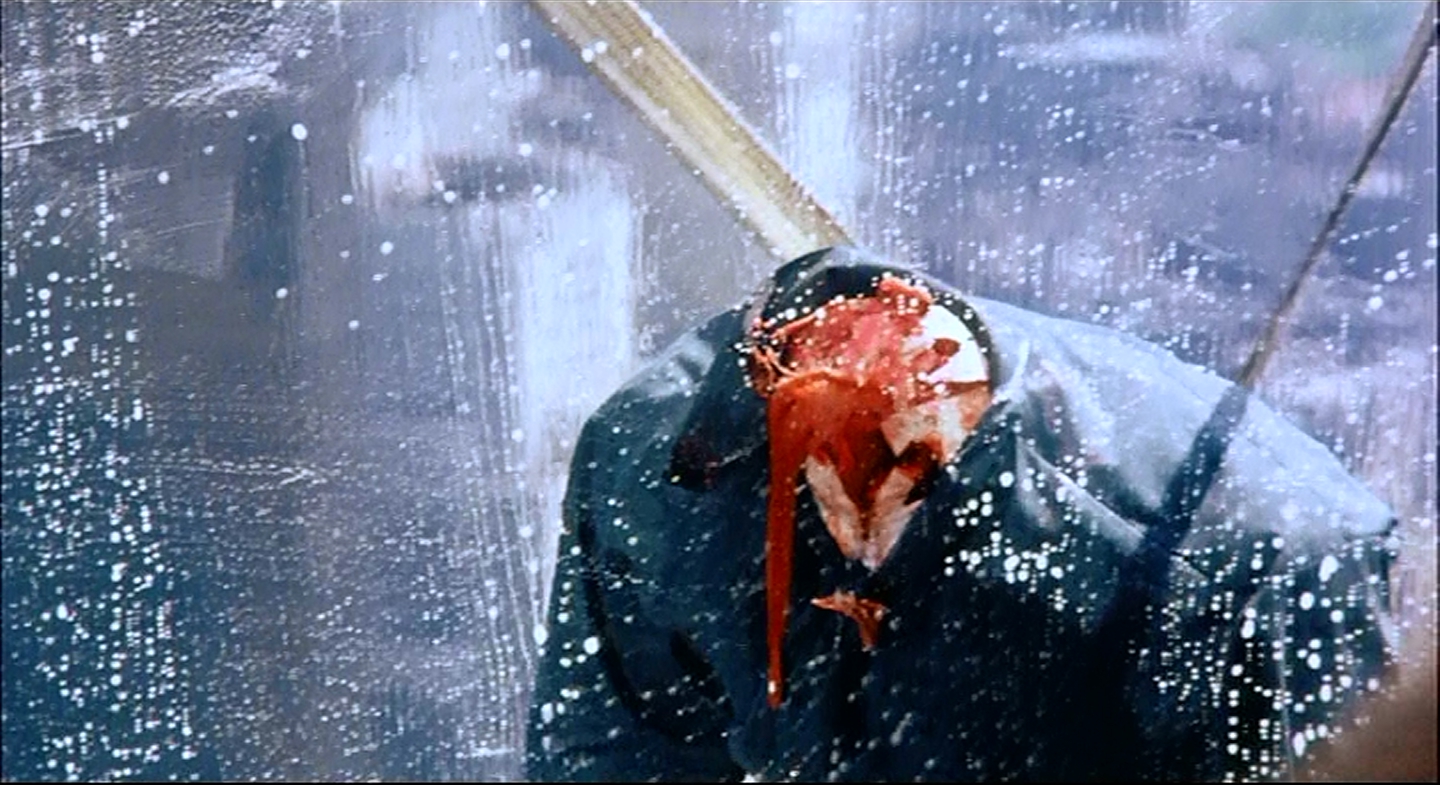
A flayed man:
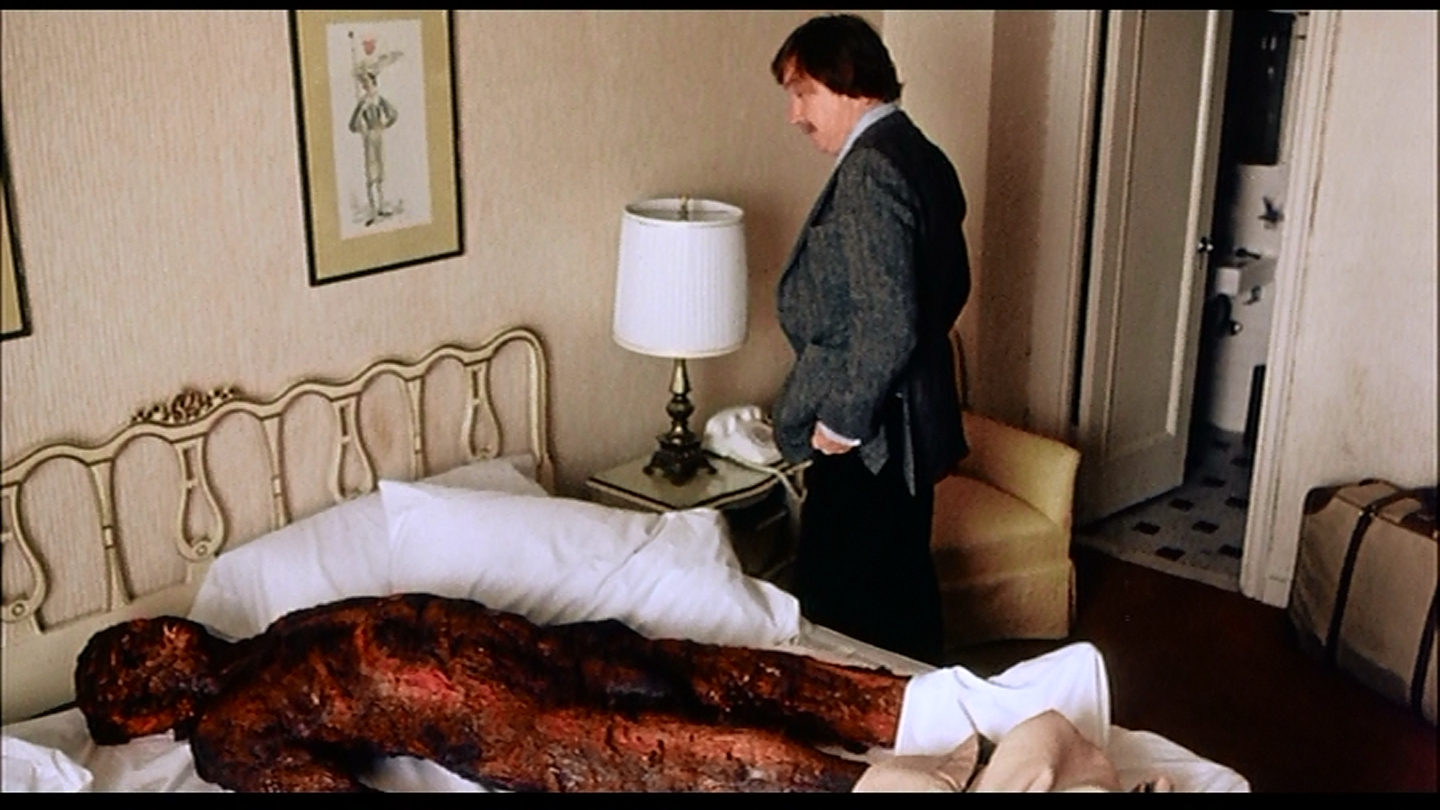
How he got that way:
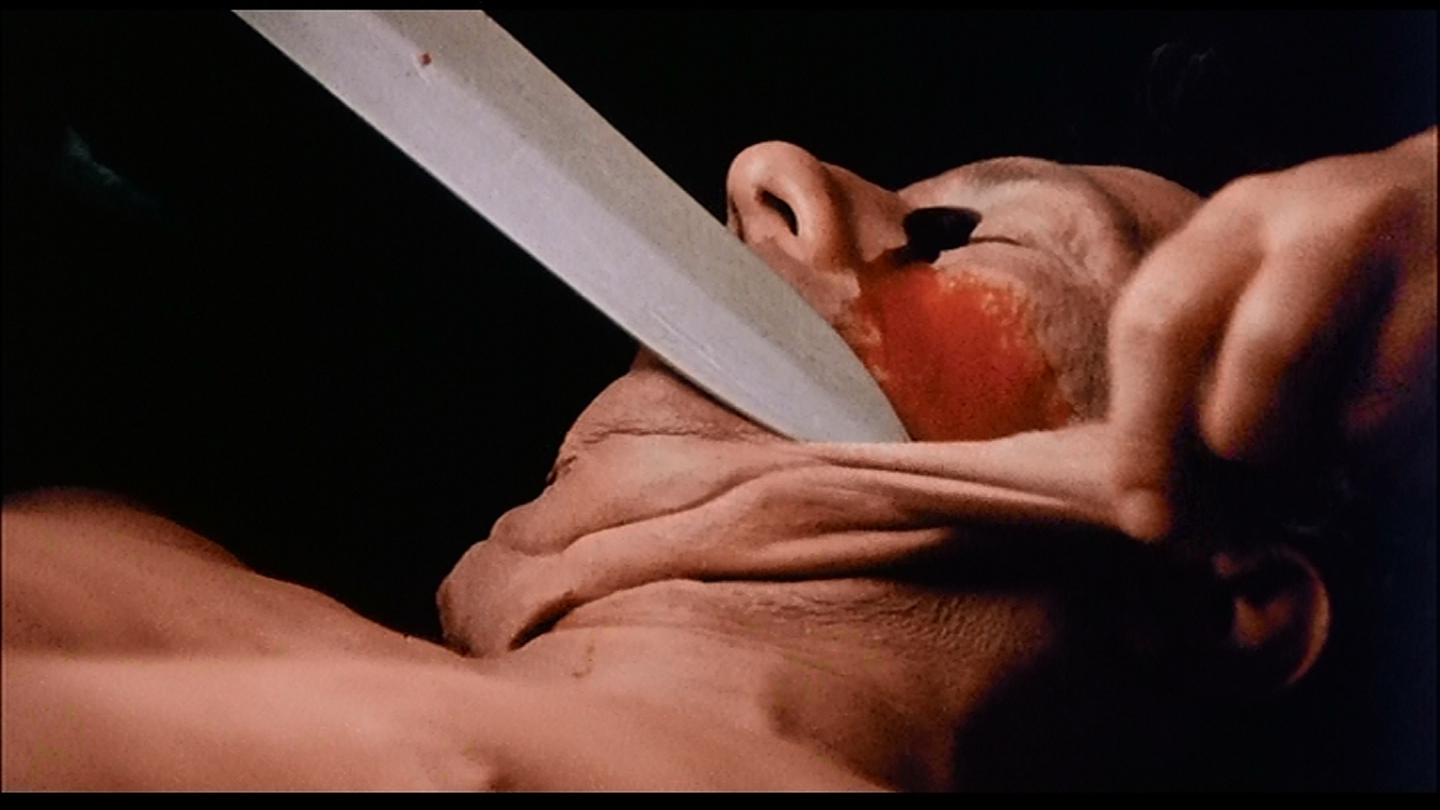
Female nudity:
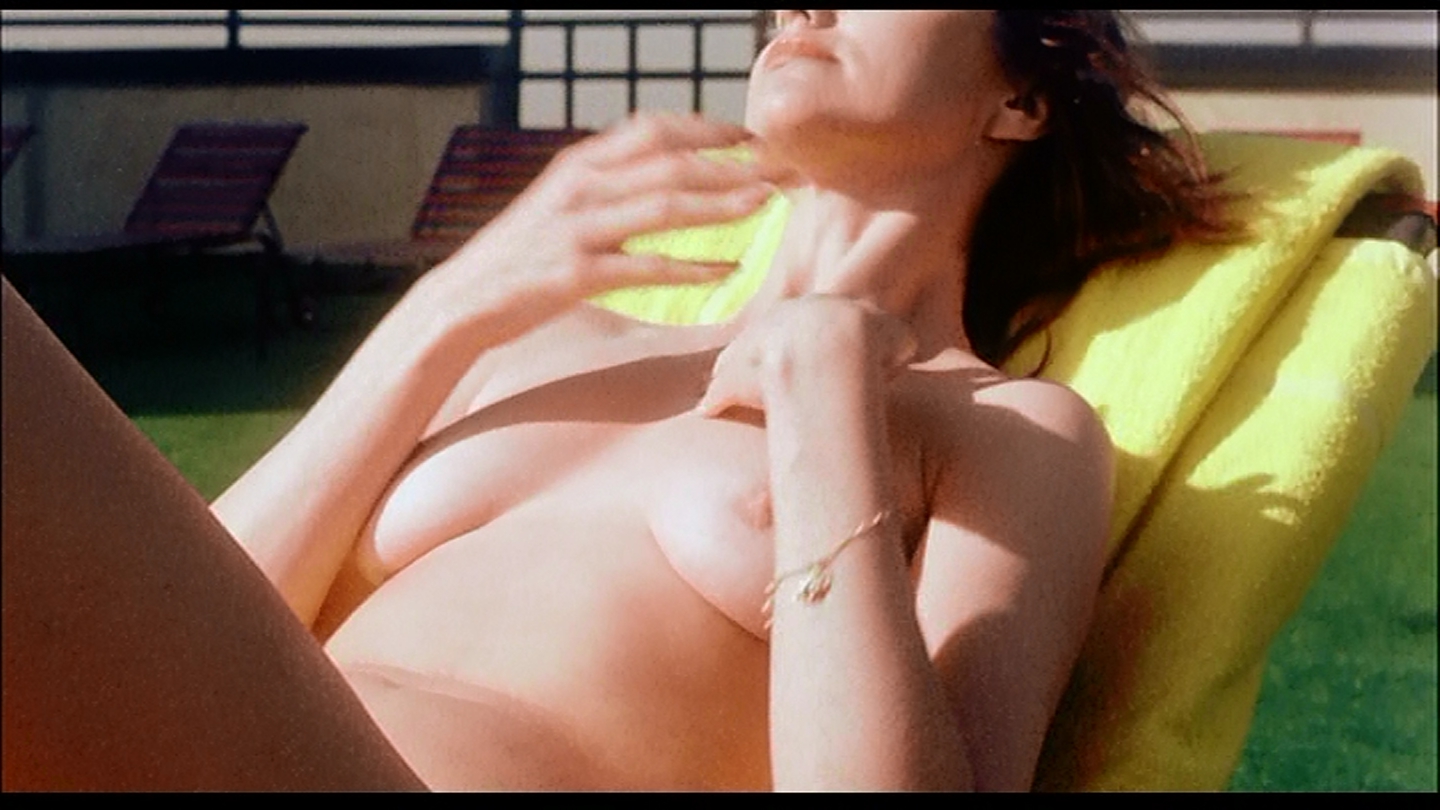
More than most monster films, Q is about place, in this case New York City. Director Larry Cohen opens with an establishing shot of New York, and constantly has the actors in the middle of New York city life. As such it is a snapshot of the city in the eighties, the fashions, the filth, the cars.
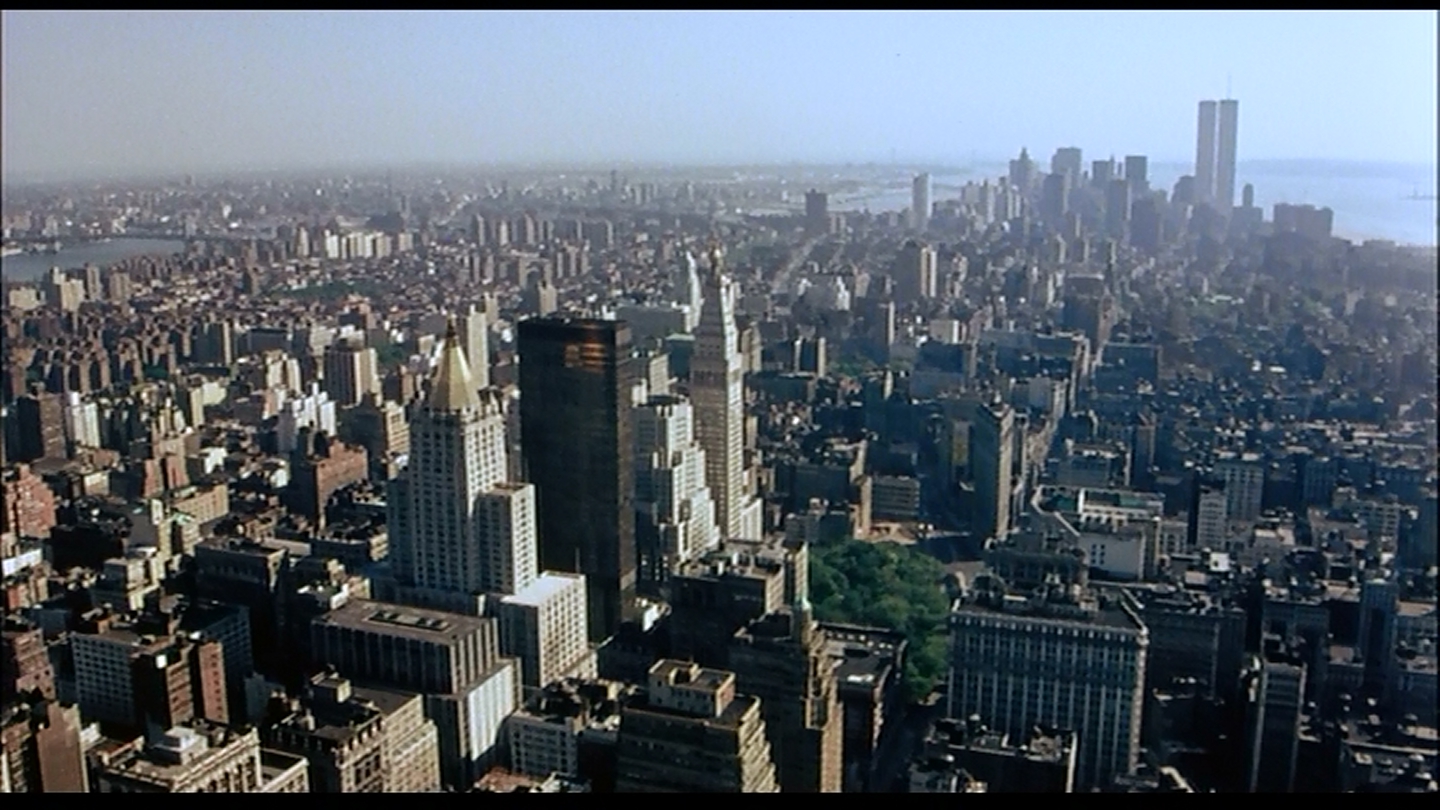
The human aspect of the story is different from the standard Godzilla triad of scientist, reporter, and love interest. Michael Moriarity plays Jimmy, a two-time loser who ends up on the wrong side of some jewel thieves. David Carradine and Richard Roundtree play a pair of NYC cops assigned to find out who's killing New Yorkers. The two intersect when Jimmy discovers the nest of the creature, and tries to parlay this into a million dollars and his way out of his small-time crime life. The movie goes out of its way to show that Jimmy is a jerk. He yells at his on again/off again girlfriend, she talks about how he hits her, he's been to jail, and he's been on drugs. We hate him. But he's the character we spend the most time with.
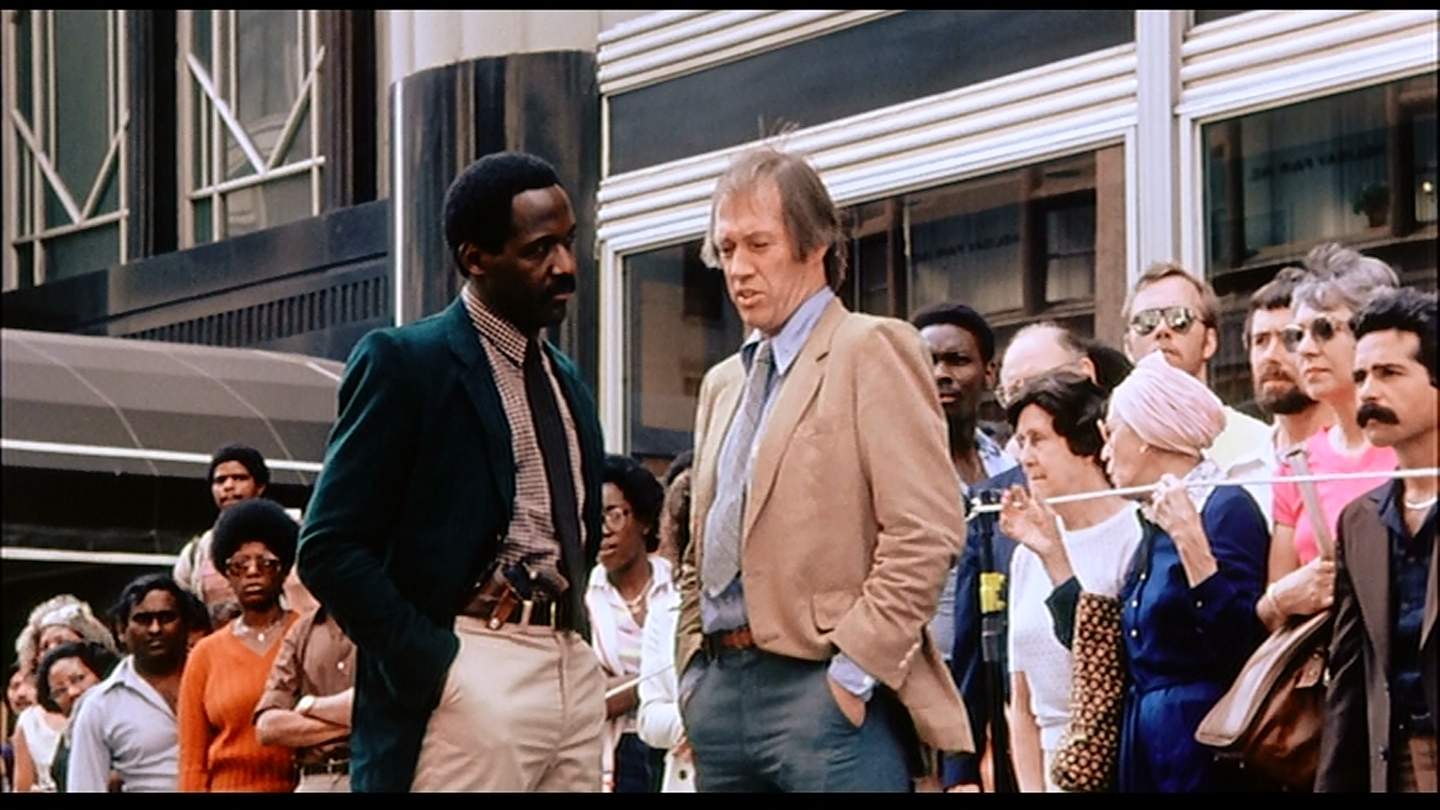
Quetzlcoatl has a nest in the crown of the Chrysler Building. A moderate amount of the film takes place there. And there are several shots of the exterior, which show how neglected it was at the time.
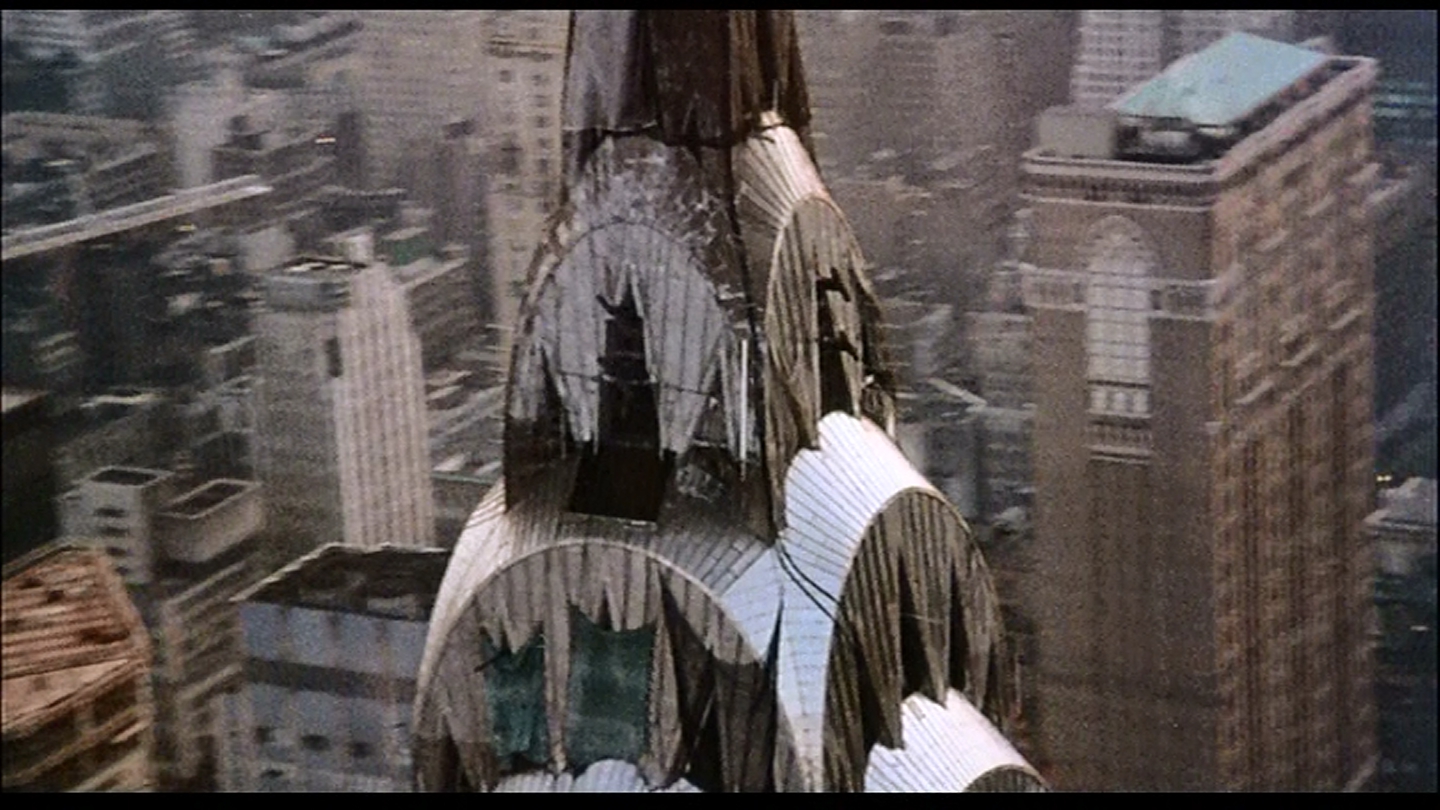
Quetzlcoatl is of course, an Aztec god, and it is being summoned by human sacrifice in the city. Quetzlcoatl was a feathered serpent, and this is some sort of naked six-limbed dragon without the firey breath, and apparently female, since it's layng eggs, where the Aztec god was male.
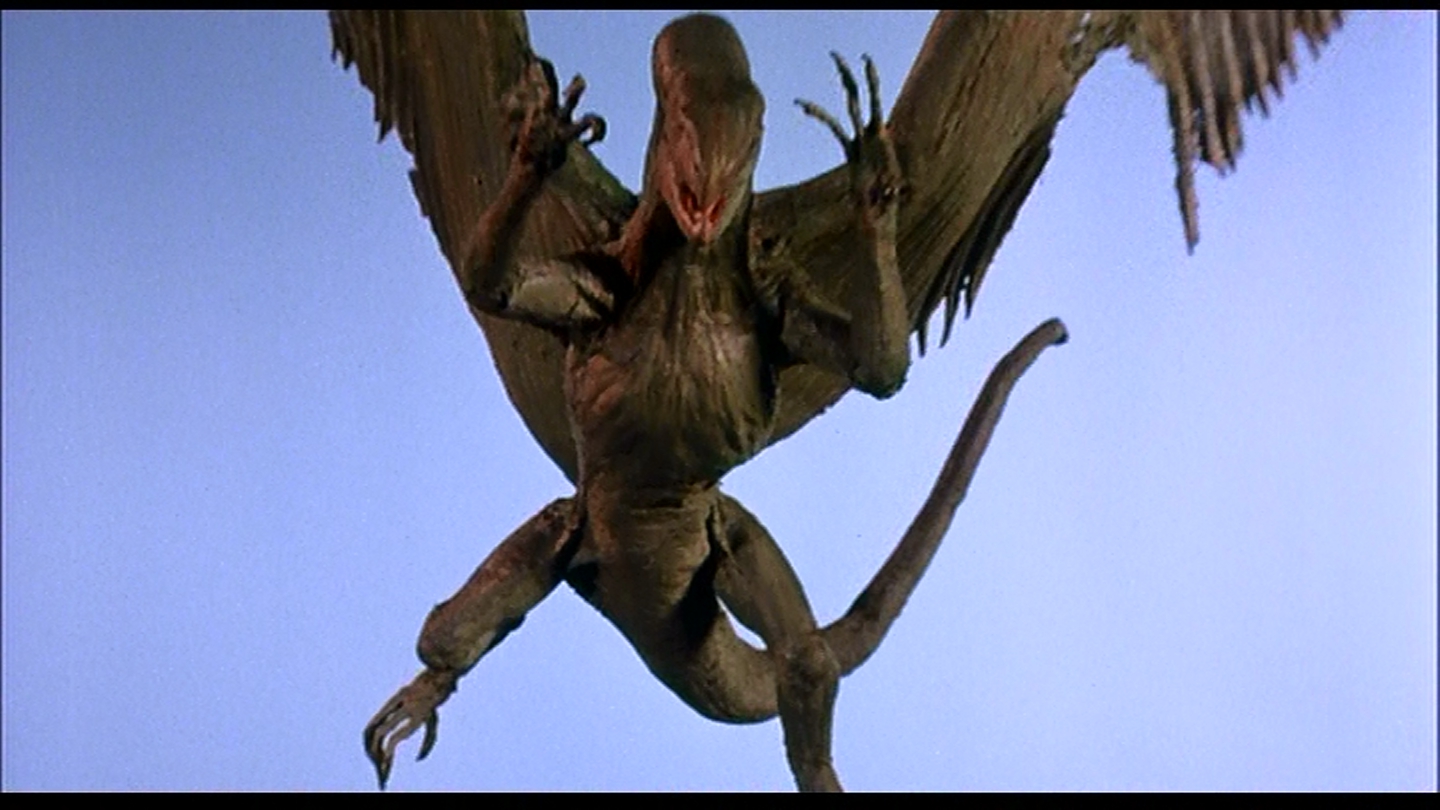
Q the Winged Serpent is a good transitional kaiju film. It encompasses a lot of eighties trends in film making, with the increased gore, nudity, the heavy use of guns, frequent use of fuck, and a monster more sympathetic than the human protagonists.
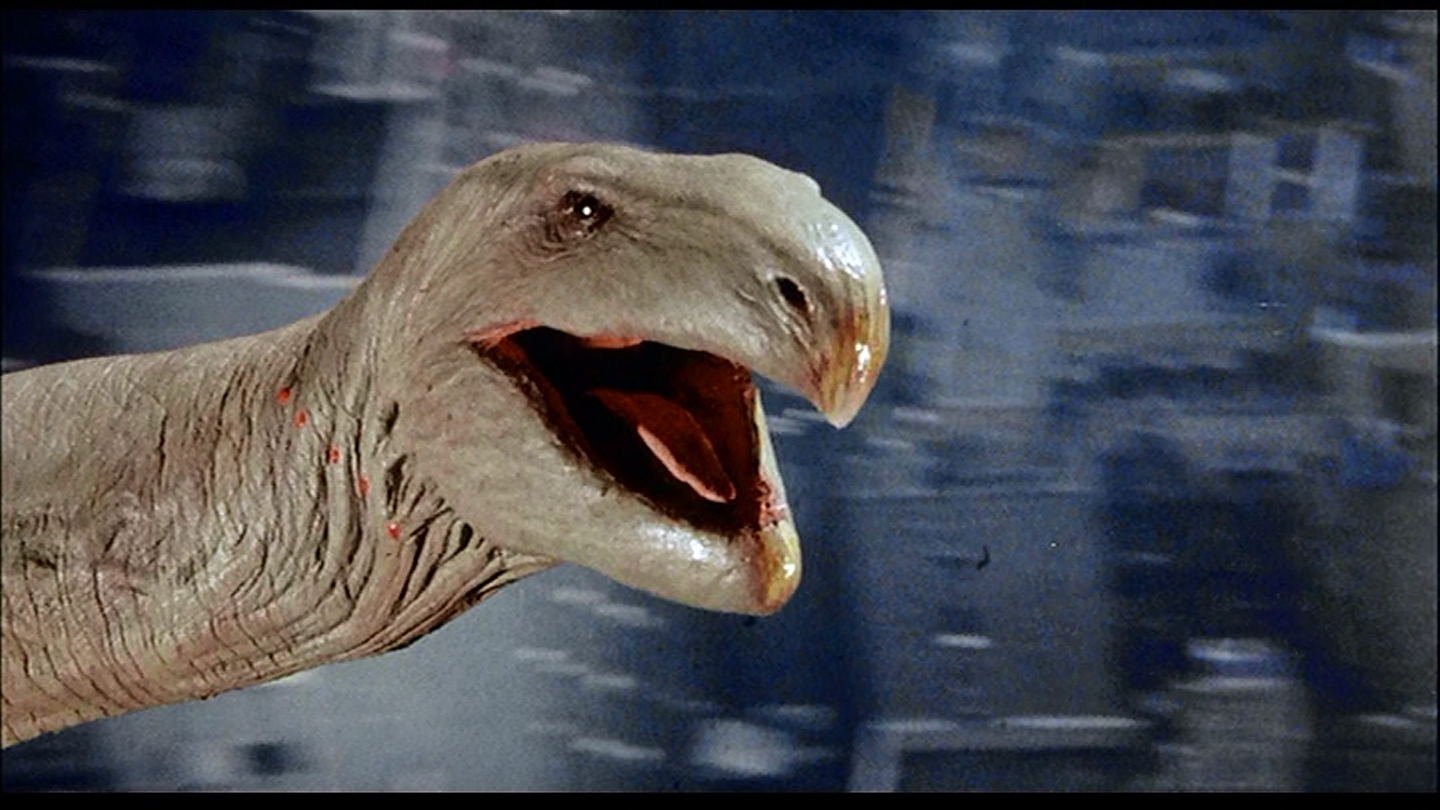
In the end, the cops gather at the top of the Chrysler Building and when Q comes back to roost, they riddle it with bullets. It flies to the Bankers Trust Company Building, which has a pyramid-style roof. Weakened, it roars at the sky, and, like King Kong, falls.
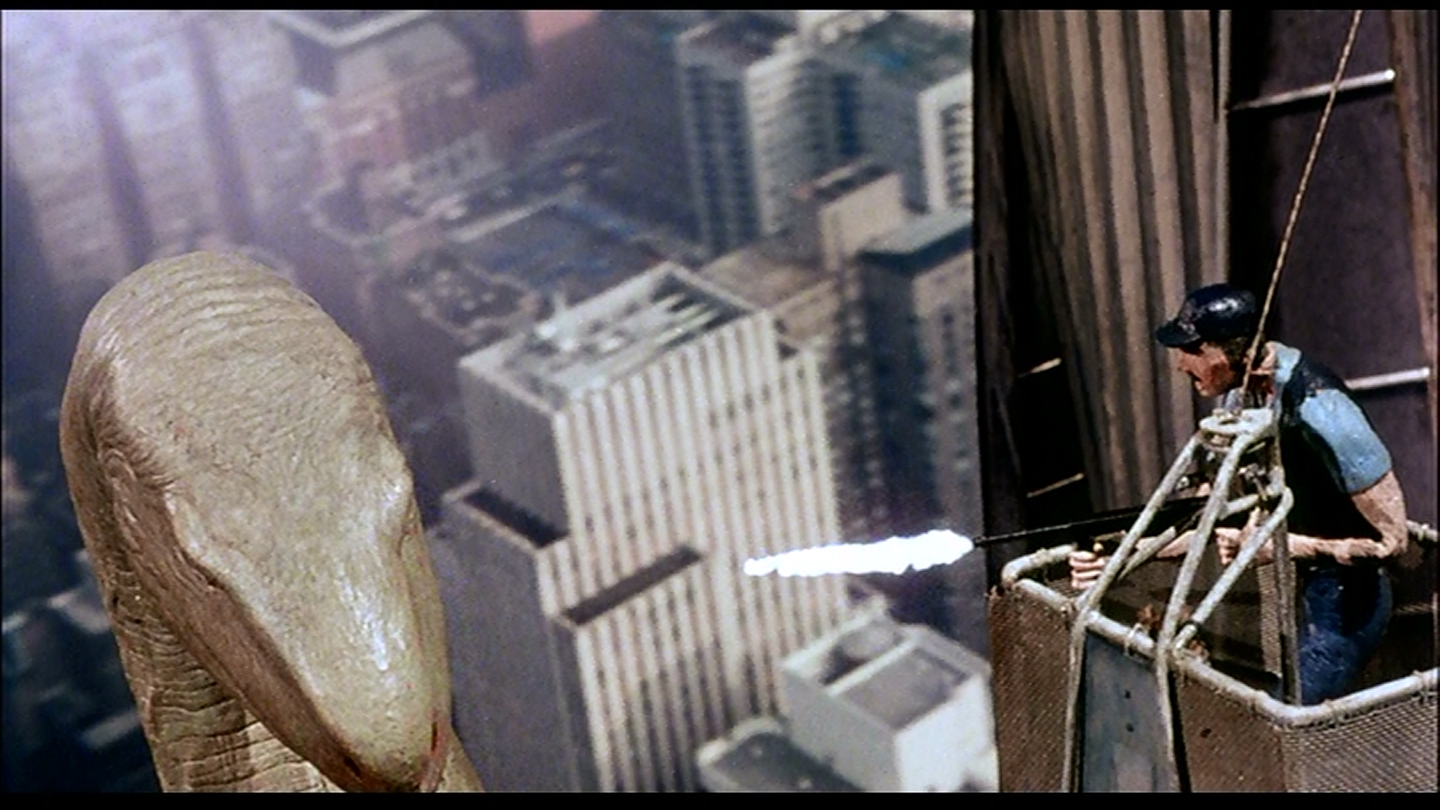
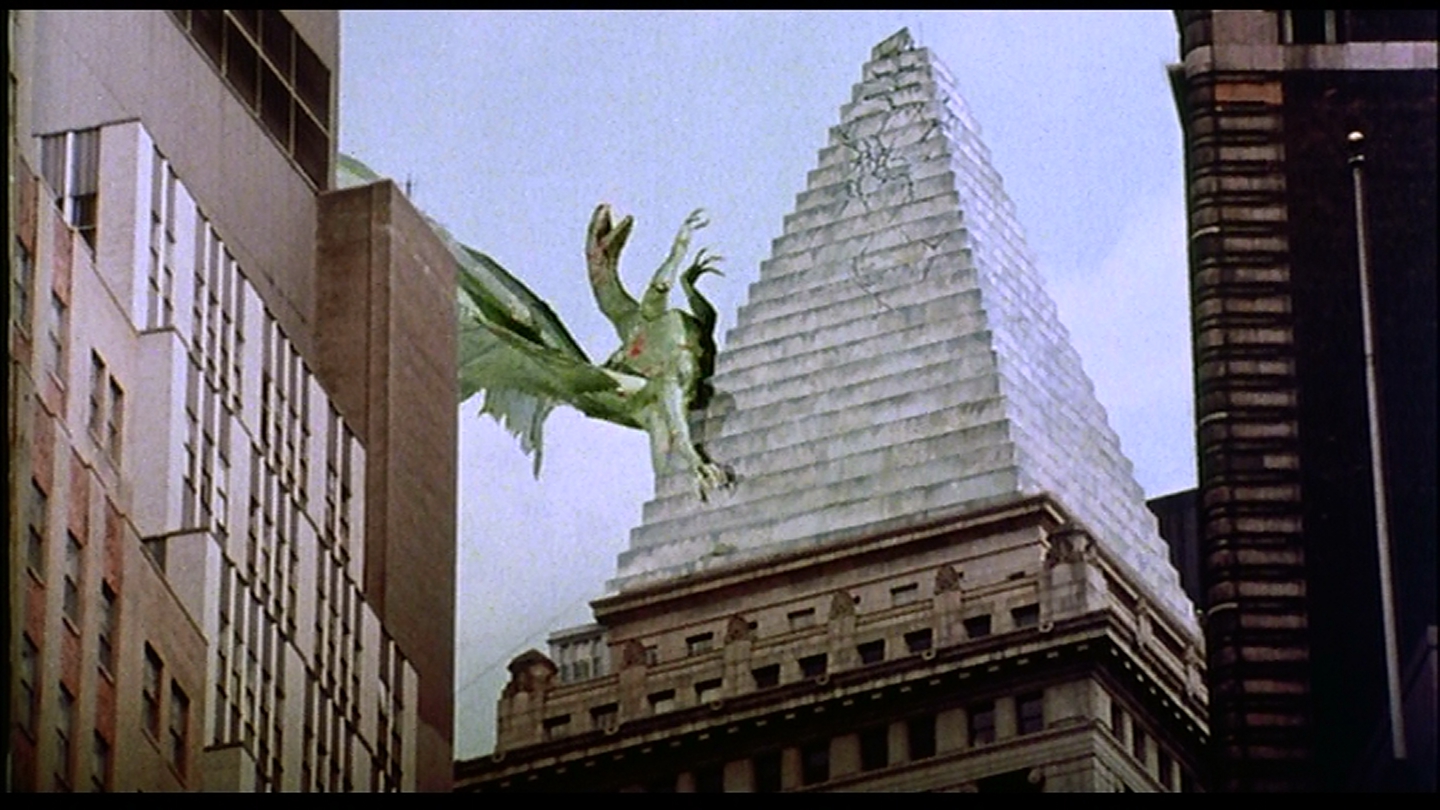
Although that's the end of the monster, that's not the end of the film. The Aztec priest who performed sacrifice to return Quetzlcoatl finds Jimmy, intending to sacrifice him. But he waits too long, and the cops shoot him in the head (the priest, not Jimmy).
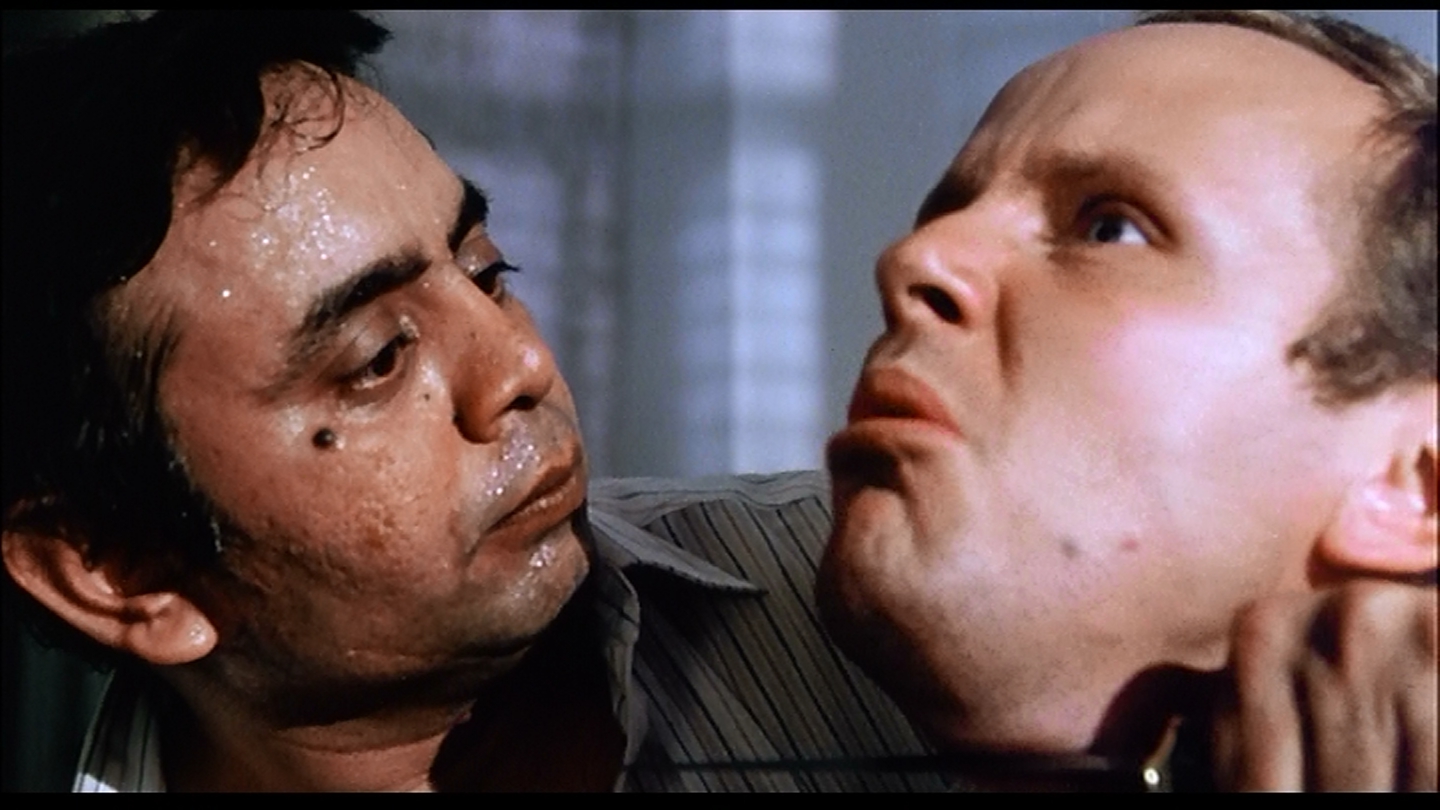
But the film still isn't done! There's a second egg, and as we pan across, it begins to hatch! 1998 Godzilla used this, too.
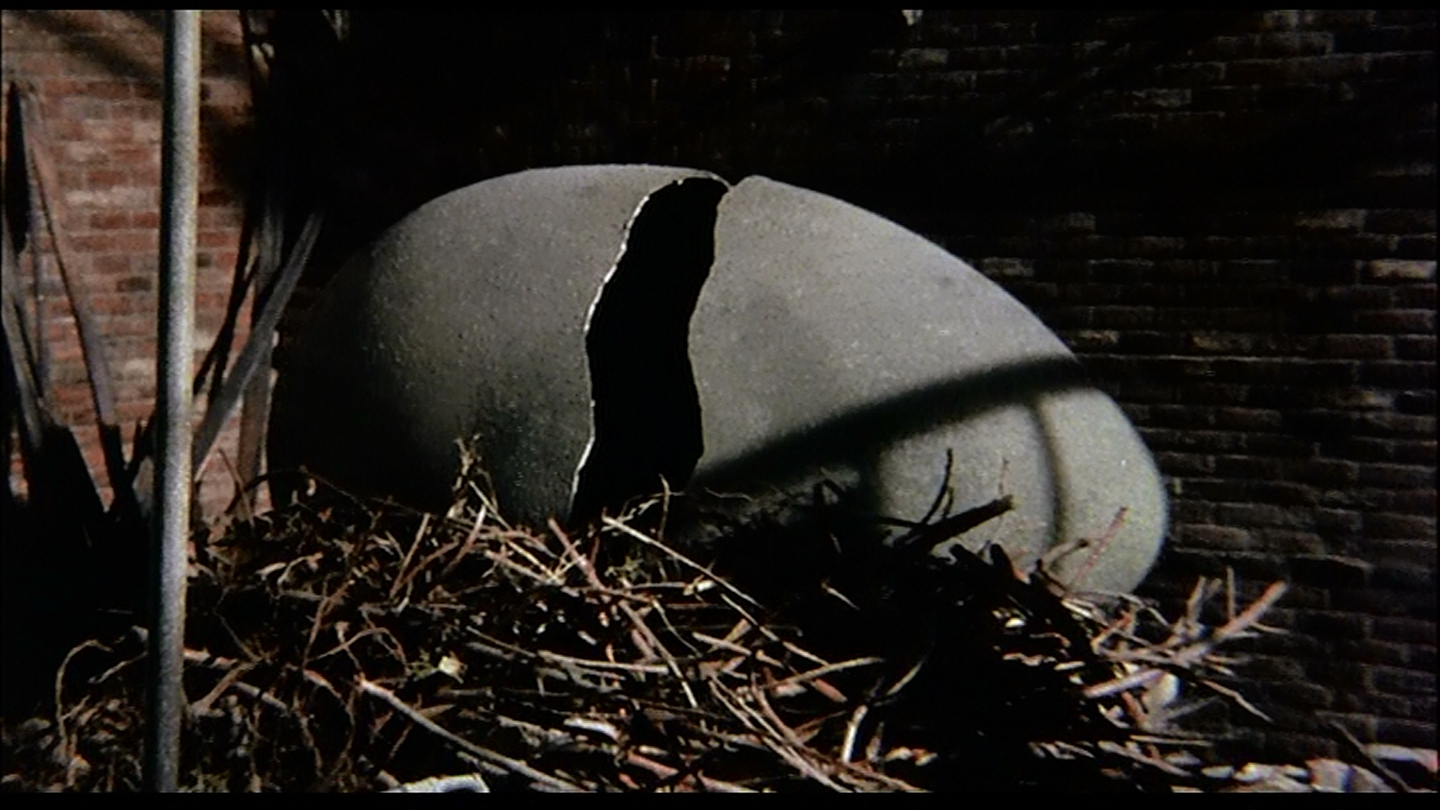
Q the Winged Serpent's influence can be seen in a number of films, most specifically, the the 1998 Godzilla. The whole 'the monster is unexpectedly female and laying eggs, the setting in New York (although Q does this much more convincingly than Godzilla), the landmark Chrysler Building, and the complete inabilty of anyone to find a giant monster somewhere in New York. This last item was a touch more plausible in Beast From 20,000 Fathoms, partially because the rhedasaurus was land-based but also because there were a lot fewer phones in 1952. And, as with many American kaiju films, firepower provides the humans with their plot solution. Not cleverness, not science, firepower.
Cohen did an excellent job with the recurring bird and temple motif that crops up in the film. He used New York well, the film feels like it takes place in the real New York, partally because he did a lot of filming on the fly, setting up on street corners and shooting. The integration of the giant monster into the human action is fair. The animators, William Randall Cook, who went on to win Oscars for the Lord of the Rings trilogy, and David Allen Cook, perhaps most notable for his King Kong Volkswagen commercial. Their work here is less detailed and engaging than that of Willis O'Brien or Ray Harryhausen. But it's not terrible.
Next week, the Big Guy returns.






